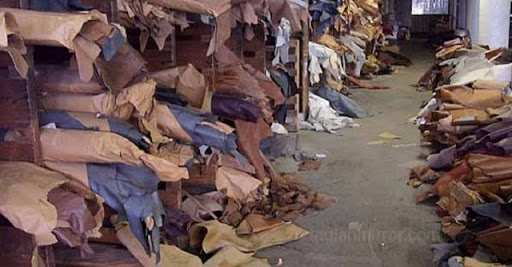Strategy to add value to leather sector chain
The Zimbabwe Leather Sector Strategy (2021-2030) would be officially launched this Friday in Bulawayo with Vice President, Dr Constantine Chiwenga, billed to lead the proceedings. The leather sector is seen as a low-hanging fruit given the country’s competitive advantage in livestock and crop production, which are key sources of raw materials. The Government has earmarked the leather industry for structural transformation along the value chain perspective.
Compact groundwork has already been undertaken with the Government, working closely with the private sector, pushing towards the revitalisation of the sector to become one of the biggest employment creators.
The Government approved the new Zimbabwe Leather Sector Strategy last November as part of measures to position the sector for increased domestic value addition and beneficiation so as to promote export-led industrialisation.
The move buttresses comprehensive sectoral transformation ambition towards high value addition under the National Development Strategy (NDS1 2021-2025), a five-year blueprint that builds towards the broader upper middle-income vision by 2030.
Dr Chiwenga would deliver the keynote address at the official launch on Friday morning at a local hotel, according to the draft programme issued by the Ministry of Industry and Commerce.
Dr Nzenza and Bulawayo Provincial Affairs and Devolution Minister Judith Ncube, would also participate.
The high-level delegation would engage with key private sector players in the leather industry led by the Zimbabwe Leather Development Council and the Confederation of Zimbabwe Industries (CZI), said the ministry.
Zimbabwe recently received about US$15 million funding from the Common Market for Eastern and Southern Africa (Comesa) to capacitate industrial operations under the leather sector value chain.
Late last year the country, with assistance from the African Development Bank (AfDB), also launched a programme to establish mini-leather industries in Matabeleland region aimed at building capacity of small to medium leather producers.
Industry and Commerce Minister, Dr Sekai Nzenza, has said Bulawayo will play a leading role in implementation of leather transformation projects, as she confirmed receipt of the critical funding from the 21-member regional trading block, to which Zimbabwe is a member.
The leather sector is already positioning itself for the expanded market under the African Continental Free Trade Area (AfCFTA) Agreement, which came into force in January this year.
This has seen key industry players agreeing to synergise under the “Zimbabwe Leather Collective”, a strategic approach to scaling up capacity and increased supply for domestic and international markets.
The new strategy, which is a successor to the Leather Sector Strategy (2012-2017), aims at increasing the overall competitiveness of the leather value chain in Zimbabwe and enhancing access to both local and export markets for the finished products.
The objectives of the new strategy, which seeks to increase capacity utilisation of value-added products from 30 percent to 75 percent by the end of 2030, enhances the application of sustainable production technologies by manufacturing companies from the current 10 percent to 60 percent by 2030 and increasing the export of leather products from 10 percent of production to 40 percent.
The Government also hopes that guided by the new strategy, the leather sector would increasingly lobby for the development and reform of 70 percent of the identified policies and legal frameworks for the transformation of the sector by 2030.
Revitalising the leather sector is one of Comesa’s flagship projects, which has seen the bloc establishing a specialised unit, the Africa Leather and Leather Products Institute (ALLPI).
Through this agency, Comesa, with development partner support, has been rolling out a regional leather industry capacity building initiative guided by its 2016-2025 Strategic Plan.
With the endorsement and mandate of the 34th Meeting of the March 2015 Council of Ministers, ALLPI has been active in assisting member states to seize emerging opportunities in the leather sector as an effective economic transformation tool.
In Zimbabwe, ALLPI is assisting the revival of the leather sector with a bias on unlocking the potential of small to medium enterprises (SMEs) producers.
The efforts have resulted in the establishment of the Bulawayo Leather Cluster Factory in 2018, with a capacity to produce about 158 400 pairs of shoes annually.-herald.cl.zw











